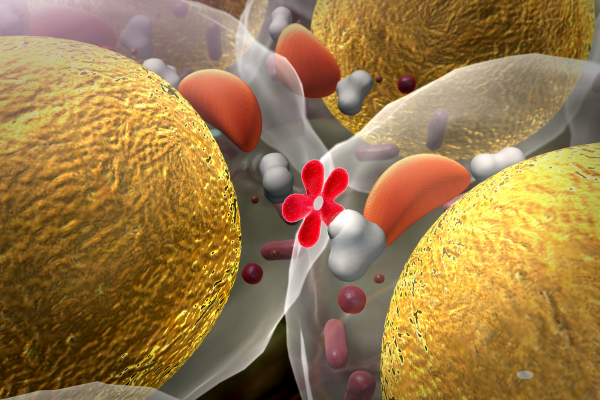Lactose intolerance is a common digestive disorder, it affects millions worldwide. In this condition the body cannot digest the sugar lactose, it is found in milk and milk products. Understanding lactose intolerance is important for managing and maintaining overall health.
This blog will help you understand in detail what lactose intolerance is and how you can manage it in your daily life.
What is lactose intolerance?
A common digestive disorder where your body cannot digest the sugar lactose which is present in milk and milk products is called lactose intolerance. This is caused when the small intestine does not produce enough enzyme lactase, this enzyme helps in the breakdown of lactose.
In the body the sugar lactose is broken down to glucose and galactose by the enzyme lactase, this is absorbed into the blood. When your lactase level is low in the body the consumed lactose remains undigested in the body. It is fermented in the colon and causes gastrointestinal issues.
Malabsorption of lactose before the age of 6-7 years is called lactase deficiency or hypolactasia
Causes of lactose intolerance
- It can be due to genetics.
- Any injuries or infection causing the small intestine to produce less of the lactase enzymes.
- Premature babies can have this condition.
- It can be a rare condition where the baby is born with an inability for the body to produce the enzyme lactase.
Types of lactose intolerance
There are four types of lactose intolerance
Primary lactose intolerance
Primary lactose intolerance is a common type. In this condition the body slowly stops producing enough lactase to break down lactose.
Secondary lactose intolerance
In the secondary lactose intolerance lactase enzyme is not produced enough in the body due to a condition like Crohn’s disease, gastroenteritis, ulcerative colitis, chemotherapy, coeliac disease and antibiotics. This can be corrected when the condition is improved.
Congenital lactose intolerance
This is a rare condition. It can be due to genetics, where the body is not able to produce enough lactase. The enzyme lactase is produced in low amounts or it is absent since birth.
Developmental lactose intolerance
This is a condition in prematurely born babies. They sometimes have lactose intolerance because their small intestines are not fully developed at birth.
Symptoms of lactose intolerance
It can take hours after ingestion of dairy products and symptoms to show up. The symptoms include:
- Bloating
- Gas
- Vomiting and nausea
- Diarrhoea
- Gurgling and rumbling sounds
How is it diagnosed ?
Hydrogen breath test
It is a non-invasive and cost effective test to diagnose lactose intolerance. The test is taken after fasting for 12 hours and 1g/kg body weight of lactose concentration is given mixed with 20% of water. After ingestion of the solution, breath samples for 2 hours, taken every 20-minutes interval. If breath has high levels of hydrogen or methane in three samples confirms the diagnosis of lactose intolerance.
Lactose tolerance test
A person is given 50g of lactose solution. Every 15 minutes for one hour the blood samples are drawn and tested for plasma glucose concentration. With an increase of 1.4mmol/L of plasma glucose confirms the diagnosis of lactose intolerance.
Genetic testing
A genetic test is done to identify the lactose intolerance. Lactase persistence/non-persistence is associated with single nucleotide polymorphisms. CC genotype is correlated with hypolactasia. Lactase persistence is associated with TT genotype. Symptoms are not experienced by all those who have CC genotype.
Biopsy
Biopsy is a more accurate invasive test for finding lactose intolerance. Sucrase-to-lactose ratio and mucosal lactase is measured in the intestinal biopsy. Due to irregular dissemination of lactase activity through the small intestine mucosa can influence the results.
Stool acidity test
This test is performed in infants and children. A stool sample is collected to check the lactic acid levels. When undigested lactose ferments in the intestines it produces lactic acid. If the stool is acidic it indicates the patient is lactose intolerant.
Role of endocrine disruptors in lactose intolerance
Let us understand how endocrine disruptors affect gut health.
Studies show that the source of oestrogen- endocrine disruptors compounds (e-EDC) has become a global health problem and a threat to human health. Traces of e-EDC get accumulated in the longer exposure and cause potential harm and damage to the endocrine system.
Another study found contamination of BPA in the raw cow milk. Longer exposure to BPA in infants affects the development. The studies conclude that the contamination of BPA could be during the processing like cooling tanks, BPA plasticised tubes. The milk is contaminated when it is packed in cans, and in infant formulas.
Packaging materials add on the endocrine disruptors. Often packaging materials used are paper, food grade plastics, metal cans, and ceramics. An endocrine disruptor Bisphenol A has been found in higher concentration in food packing material. Plastic food containers which are made from polycarbonate plastic containers have Bisphenol A and contaminate food.
A composition of beneficial bacteria and other microorganisms co-existing in the gut is called gut microbiome. It also acts as an endocrine organ by helping with endocrine and neuroendocrine functions. Dysbiosis of the gut can be caused by endocrine disruptors.
Although there are studies on how endocrine disruptors affect the gut and endocrine system, more studies are required to understand how endocrine disruptors affect the lactose intolerance.
How can you manage lactose intolerance?
Dietary lactose restriction is the most common management and treatment for lactose intolerance. But restricting dairy products alone will not improve the condition, many food products have lactose in them. It is best to be cautious in what you eat. Food products like breakfast cereals, pancakes, biscuits, cookies mix, instant soups, salad dressings, candies and sweets may contain hidden lactose in them.
In primary lactose intolerance, restricting foods containing lactose for 2-4 weeks can improve the conditions.
Patients can be administered Lactase enzyme supplements to help with hydrolysis of the lactose.
Cutting milk and milk products can result in many nutrient deficiencies. In the below table you can find the alternatives to milk and milk products.
| Lactose rich products | Alternative products |
| Milk | Soy milk, oats milk, rice milk, coconut milk, sesame milk, almond milk, hemp milk, barley milk, sorghum milk and many more have come down. |
| Ice cream | Vegan ice creams |
| Paneer | Tofu and tempeh |
| Yoghurt | Peanut yoghurt, soya curd, and cashew yoghurt |
| Cheese | Vegan cheese |
Avoiding milk and milk products can lead to calcium deficiency. You can include other calcium rich food products in the diet to avoid calcium deficiency such as broccoli, green leaf vegetables, ragi millet, almonds, Brazil nuts, sardines, canned salmon, seeds (poppy, sesame and chia seeds), beans and lentils, soy and soy product, figs, and fortified food products.
Make sure you also get enough vitamin D through food.
Kripa N
Senior Clinical Dietitian, Simplyweight





